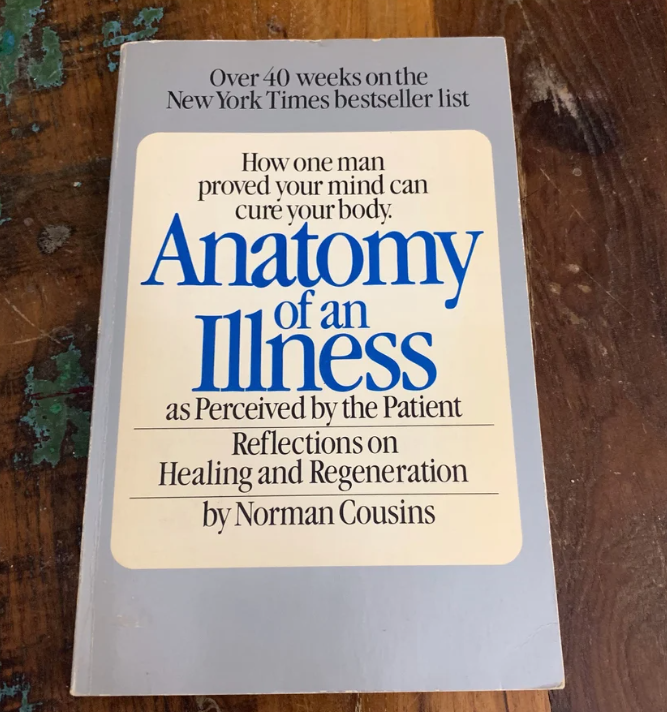Holisticism in the Light of Norman Cousins' 'Anatomy of an Illness' and its Interlink with Homoeopathy's Holistic Approach
- Homoeoclinic
- Dec 11, 2024
- 4 min read

The concept of holisticism in healthcare emphasizes treating the person as a whole—mind, body, and spirit—rather than merely addressing individual symptoms. This philosophy aligns closely with the core principles of homoeopathy. Norman Cousins’ groundbreaking book Anatomy of an Illness brought attention to the profound impact of the mind-body connection in healing, providing compelling evidence for the therapeutic role of emotions, thoughts, and a positive attitude in overcoming illness. As a homeopath with a Bachelor of Homeopathic Medicine and Surgery (BHMS) and a Doctor of Medicine (MD) in homoeopathy, and having practiced in the UK for over a decade, I have observed how Cousins’ insights mirror the foundational precepts of homoeopathy. This article explores the confluence of these two perspectives on holistic healing.
Understanding Norman Cousins’ Perspective on Holisticism
Norman Cousins, a prominent journalist and advocate for patient-centered care, chronicled his own recovery from a severe, life-threatening illness in Anatomy of an Illness. Cousins attributed his recovery largely to the power of positive emotions, laughter, and the conscious use of his mind to influence his body's healing processes. His assertion that "belief becomes biology" challenged the prevailing biomedical model and introduced a more human-centered approach to healing.
Key aspects of Cousins’ philosophy include:
Mind-Body Connection: Cousins argued that emotions such as hope, humor, and positive thinking could influence the immune system, enhancing the body's capacity to heal itself.
Active Participation in Healing: Patients should be active participants in their healing process, not passive recipients of medical interventions.
The Role of Laughter: Cousins famously watched humorous films and experienced a measurable reduction in pain, leading to the idea that laughter could stimulate endorphin production and support natural pain relief.
These ideas, though revolutionary at the time, now find support in the fields of psychoneuroimmunology and integrative medicine. Cousins’ work underscores the potential for self-healing, a notion that aligns seamlessly with the homeopathic approach.
The Holistic Philosophy of Homoeopathy
Homoeopathy, founded by Dr. Samuel Hahnemann in the late 18th century, is inherently a holistic system of medicine. The core principles of homoeopathy reflect a comprehensive approach to health and well-being:
The Concept of Vital Force: Homoeopathy believes in the presence of a vital force that maintains health. When this force is disturbed, illness arises. Remedies aim to restore balance to the vital force, enabling self-healing.
Individualization of Treatment: Each person’s illness is unique, even if the diagnosis is the same. Homoeopathy considers the patient’s physical, mental, and emotional state to select a tailored remedy.
The Law of Similars ("Like Cures Like"): A substance that causes symptoms in a healthy person can, when prepared homeopathically, stimulate the body’s healing response to similar symptoms in a sick person.
This holistic model shares essential similarities with Cousins’ approach. Homoeopathy recognizes the significance of mental and emotional states in illness, much like Cousins’ focus on emotional well-being as a determinant of health.
Interlinking Cousins' Approach with Homoeopathy's Holistic Model
The philosophical overlap between Cousins’ insights and homoeopathic principles is unmistakable. Both recognize that health is more than the absence of disease—it is the harmonious functioning of body, mind, and spirit. Here’s how the two paradigms connect:
Mind-Body Interconnection: Cousins’ emphasis on the mind’s role in healing echoes homoeopathy’s view that mental and emotional states play a pivotal role in disease causation. Homeopathic remedies are chosen not only based on physical symptoms but also on emotional and mental characteristics. For example, Ignatia amara may be prescribed for grief-induced ailments, while Nux vomica addresses stress-related conditions.
Restoring Vital Force vs. Enhancing Self-Healing: Cousins saw the body's ability to heal itself as a dynamic force that could be strengthened by mental well-being. Homoeopathy’s concept of vital force is analogous to this, with remedies aiming to strengthen the vital force and support the body’s natural healing capacity.
Active Patient Participation: Cousins encouraged active patient participation in the healing journey, just as homoeopathy requires patients to be observant and introspective about their symptoms. Homoeopaths engage patients in self-reflection, as understanding a patient’s experience of illness is essential for remedy selection.
Emotional Healing as a Component of Physical Healing: Cousins’ belief in laughter’s healing power aligns with homoeopathy’s approach of treating emotional imbalances. Remedies such as Pulsatilla are prescribed to address emotional sensitivity, while Aurum metallicum supports individuals with feelings of deep sadness.
Case Studies and Clinical Reflections
As a homoeopathic consultant, I have witnessed many cases that exemplify the interconnection between Norman Cousins’ holistic views and homoeopathic practice. Consider the following case:
Case Example: A 40-year-old woman presented with chronic eczema aggravated by emotional stress. Her symptoms worsened following a personal loss. A detailed case-taking revealed grief as a dominant emotional state. The homeopathic remedy Ignatia amara was prescribed, leading to a gradual reduction in her eczema. This outcome highlights how emotional well-being directly influences physical health—a principle advocated by both Cousins and homoeopathy.
This case underscores how homoeopathy addresses the "whole person" rather than isolated symptoms. By supporting emotional health, homoeopathy facilitates physical recovery, much like Cousins’ advocacy for mind-body harmony.
Conclusion
The convergence of Norman Cousins’ ideas in Anatomy of an Illness with the principles of homoeopathy illustrates the timeless relevance of holistic healthcare. Both approaches affirm that healing extends beyond physical symptoms, requiring attention to mental and emotional dimensions of health. Homoeopathy’s individualized, holistic treatment plan resonates with Cousins’ call for active patient participation and the mind’s role in healing. By fostering an integrative view of health, both Cousins and homoeopathy contribute to a more human-centered approach to medicine. This perspective continues to guide homoeopathic practice in modern times, where patient-centered care is paramount in achieving sustainable health outcomes.
























Comments